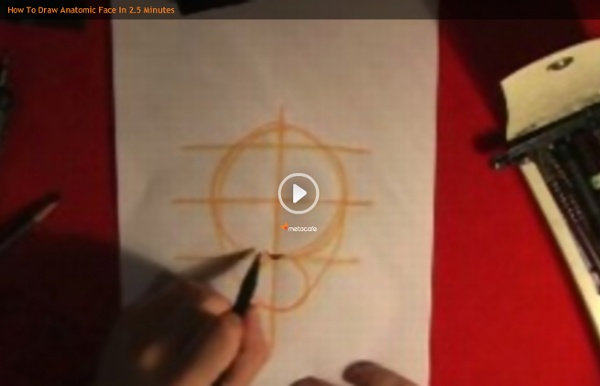



untitled Posted by: Lakshal Posted date: March 6, 2012 | 9 comments Tags: actions, mulletgod, photoshop A few years ago, I decided to make some Photoshop actions to make editing a little easier for people. There are so many simple things that people do in Photoshop that are tedious because of the click, click, click, drag, click nature of things in the software. Actions help with automating the process, doing much of the hard work for you. I had a website dedicated to these actions but that site was hacked and subsequently infected my main wedding photography website which obviously was not a good thing. These actions are completely free of charge but I would love it if you could make a donation to Médecins Sans Frontières if you enjoy using the actions. Download the actions here Please note, The readme document contained in the ZIP file should have everything you need to know and I can’t offer any support for these actions anymore so please do not contact me asking questions!
Steampunk Jewelry inspired by Victorian Science Fiction | Designerscouch #thecritiquenetwork How to Draw the Nose Update 09-26-2012 – Above is a video version of this tutorial. For more video tutorials visit Proko.com and subscribe to the newsletter In this tutorial I will go over the structure of the nose and give detailed information about the bridge, ball, and nostrils of the nose. At the end, I will show a step by step of a nose drawing. The Major Planes When drawing the nose, I’ll usually start by indicating the 4 major planes – top, 2 sides, and bottom. Anatomical Information I think the anatomical shapes in the nose are really interesting. The Minor Planes It’s important to memorize the subtle plane changes in all the different part of the nose. Minor Planes of the Bridge The Glabella is shaped like a keystone. Minor Planes of the Ball The ball of the nose isn’t perfectly round, but has very distinct plane changes. Minor planes of the Nostrils The nostrils, also called wings, curl under themselves similar to the septum. Drawing the Nose 4. Made a video version of this tutorial.
Tutorial Tuesday: Foreshortening Tricks Hi folks! Tutorial Tuesday is going to be a basic one – I’m a bit under the weather currently so this may not be the best post, but I want to give you something that I feel is important in the world of drawing – some pointers on foreshortening. Check this out. Foreshortening is basically an optical illusion created from a compressed looking drawing in perspective. There’s several ways artists choose to render their drawings using foreshortening. Receding Plane Technique Scruffy Ronin uses a method that relies on a drawing a flat plane that recedes into space as a boundary. Five Points in Foreshortening Here’s another basic set of rules you should follow when working with foreshortening. Size, Overlapping Shapes, and Surfaces This brief little tutorial from Gene Kelly illustrates some quick and easy methods to apply the “textbook” techniques that I showed above. Blocks and Circles There you have it – tutorials within a tutorial (sort of). See you next week.
Rocketeer Rocket Pack from Trash I was able to find everything I needed lying around the house, but if you don’t have a large stock of craft supplies you might need to pick up a few items. From your recycling bin: • two 2L pop bottles (I used Coke Zero) • mouth was bottle • two shampoo or conditioner bottles (plastic deodorant containers may work too) • round plastic dip or spread container • thin cardboard from cereal boxes or something similar • paper towel tube From the thrift store or the back of your closet: • old purse with brown faux-leather straps From the craft store, hardware store or your supply cabinet: • scissors and x-acto knife • glue gun and glue sticks • white glue • masking tape • wire • spray primer • spackling paste • silver spray paint • craft paint in bronze, pewter and black • paint brushes
Big Guide to Drawing the Body by `Cedarseed on deviantART Top 45 Illustration of Sexy Girls Drawing sexy girls is so difficult because the female body is considered a work of art and takes large amounts of time. We have compiled a list of Top 45 Illustration of Sexy Girls. It is good to see different artists have different drawing and coloring styles. All of the girls look really beautiful and attractive. Some of the illustrations keep staying in my mind for a long time. The Galactic Blasters Gun Shop (by @baekdal) #design Written by Thomas Baekdal | Thursday, March 24, 2011 Ever since reading "The Hitchhicker's Guide to the Galaxy" I have always wanted to own my very own Kill-o-Zap. For those who do not know what that is, here is how it is generally described. The designer of the gun had clearly not been instructed to beat about the bush. 'Make it evil,' he'd been told. 'Make it totally clear that this gun has a right end and a wrong end. I haven't actually found one yet, but earlier today I did come across Dr. What about this "Unnatural Selector - ray blunderbuss." What about a 17 inch F.M.O.M. ...or what about the "Righteous Bison Indivisible Particle Smasher?". Follow: 42Concepts